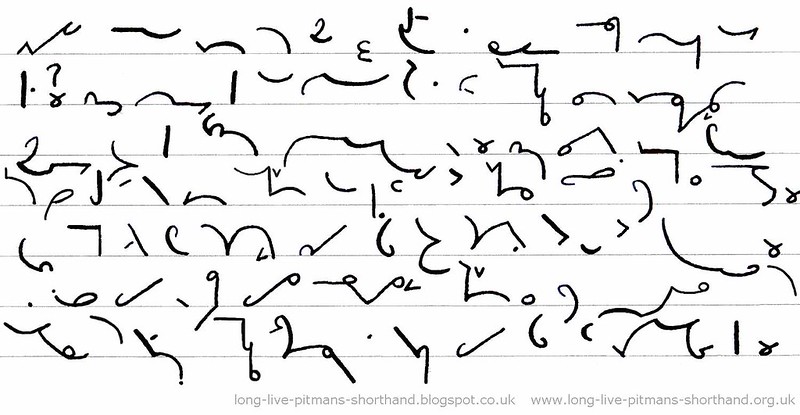
Who needs a pencil today? We have all sorts of writing instruments and most of it is done on the computer. There was a time when a pencil was very important. How would Mr. Pitman have managed to invent his stenography system, shorthand, without a pencil? In those days pencils were the main writing tool, or perhaps a pot of ink to dip your pen into. I remember my first days at school, after the chalk and blackboard beginnings, we had pencils and progressed to pen and ink.
However, to go back to Mr. Pitman the man that invented the British shorthand. I did a years training as a secretary and learning stenography was the main part, and you did it with a pencil. In the english system you write what you hear using the various steno signs and the signs and not how you spell the word. It depended on how much pressure was used on the pencil. A “p” and a “t” sound were used with normal pressure, but a “b” and “d” you have to press a little more to get the effect. Only consonants had signs, the vowels were done with dots and dashes.
As you progressed you could forget the dots and dashes as the position of the word written on the paper depended on the vowel being used: though the line on the paper, on the line, or above gave you the sounds of the various vowels. I eventually passed a few exams measuring how many words per minute I could write. I got up to 120 wpm, but as you were writing you were always behind what the dictator was saying and had to keep the words in your mind.
That was the idea in a nutshell and what I learned in stenography I can still do today. When I found the print as above on Internet, I was happy to still be able to read it, at least most of it. It all had to be done in pencil to get the proper depth of the signs, although with time and experience you got used to the sign language and could do it with a biro if necessary. Today this system is no longer necessary. We are now the computer generation and as the only Brit in the company where I worked, the boss never bothered to dictate, but just tell me what he wanted in the letter. Secretaries are also now a dead race, no longer needed to write letters. Fax and computer with the e-mails have taken over. I still use my shorthand today if I have to write something quickly. Mr. Swiss can also write it, but the Swiss had their own system, as the Americans also had with their Gregg.
And I could also write French and German in steno. Of course the main thing is could you read your own shorthand. The main thing was to do it with a pencil.

At sometime in my life I knew Gregg, would never have thought of this again, good post
LikeLiked by 1 person
I learned steno when I was 17 years old, am now 72 and can still use it
LikeLike
Gregg shorthand was a staple of my first job. I loved it–like a secret language!
LikeLiked by 1 person
But the outlines are like words with some letters missing. Steno is composed of Lines and curves
LikeLike
I took shorthand in h.s. and learned the basics but never used it beyond school.
LikeLiked by 1 person
The owner of the company where I worked in Switerland always made noted in his German shorthand and he was already over 60 years old.
LikeLiked by 1 person
My mother knew Pitman and wanted me to learn it, but stenography was beginning to disappear by the time I was entering the workplace. Dictaphones had arrived by then. I’m VERY glad I learned to type with all ten fingers, but that was a requirement of the New York school system. Anyone going to college had to learn to do two things: type … and swim.
Swim? The typing was for writing papers in school. The swimming was so that if we fell out of a boat (on our way to college?) we wouldn’t sink. Maybe it was because we actually HAD a pool in high school?
LikeLiked by 1 person
I also learned touch typing at the same time and am so glad I did. It is a great advantage.
The dictaphones also took over in our office, but I always preferred the actual dictation. I was sent to a conference in Oslo to do the minutes of an international tool meeting by my company and did it all in shorthand. That was really a trial because I could only type them a week later when I retured to the company in Switzerland.
I can swim, but something like a dog. They can all swim if you throw them in the water.
LikeLike
Fascinating article. It’s like a type of conlangery
LikeLiked by 1 person
I once began to learn Arabic and noticed that their writing has a similar style. The consonents are the squiggles and the vowels dots and dashes. The kids in Arabic speaking countries stop using the vowels with time, as they recognised the outlines of the words without them.
LikeLike